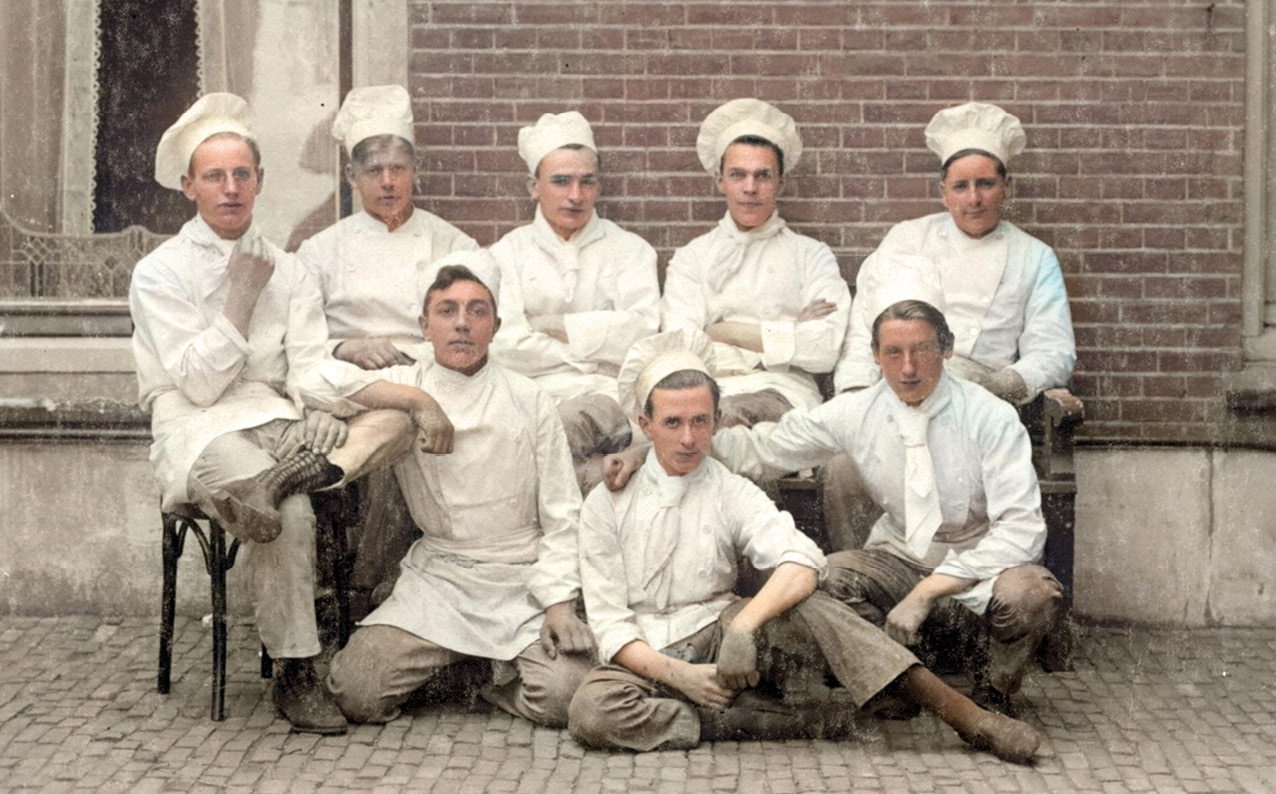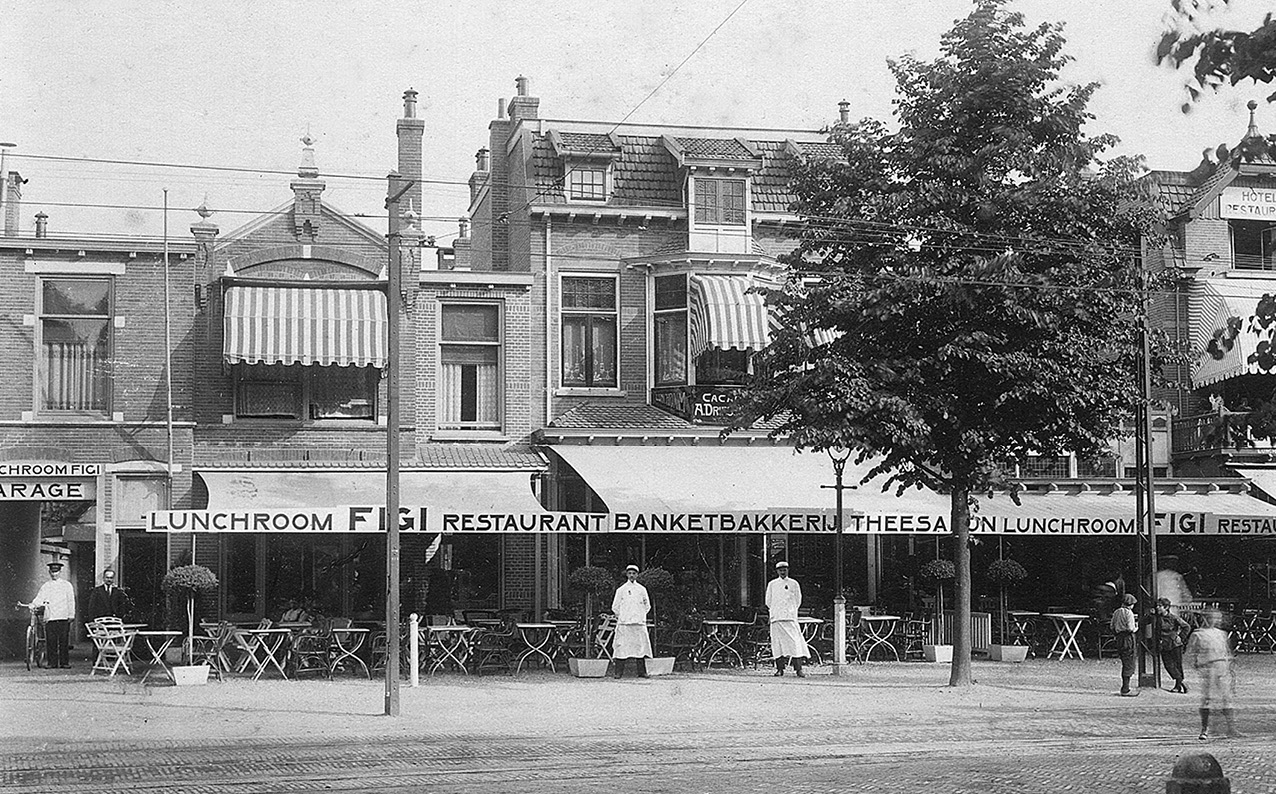[embed-google-photos-album link=”https://photos.app.goo.gl/YhAUMUraaBRnpbw17″]
An automobile stops in front of Lunchroom Figi. Few years later, in 1925, a gasoline pump offering fuel from the Batavian Oil Company (a subsidiary of Royal Dutch Shell) was installed in front of the hotel.
The main crossing of Zeist, at the turn of the 20th century. The kiosk, behind the large gas lantern, sold magazines and public transport tickets. It was also the waiting room for travellers using the horse tram to Utrecht.
Bakers posing in front of George Figi’s bakery, the current location of Hotel Theater Figi – in front of the Town Hall. Kees Ruijs as a youngster at the top center.
Aerial imagery of the city’s historic centre around the 1930’s. Behind Figi’s facade, the high pointed roof of the new Figi Theater (1925).
As the number of cars grew, Figi installed a gasoline pump in 1925 (left of the lunchroom). It offered ‘autoline’ from the Batavian Oil Company – a subsidiary of Royal Dutch Shell.
After Figi opened its ‘Concertzaal’ in 1925, family and friends ran bike tours through Zeist for promotional acitivities. In front of the photograph: Eros, the family dog.
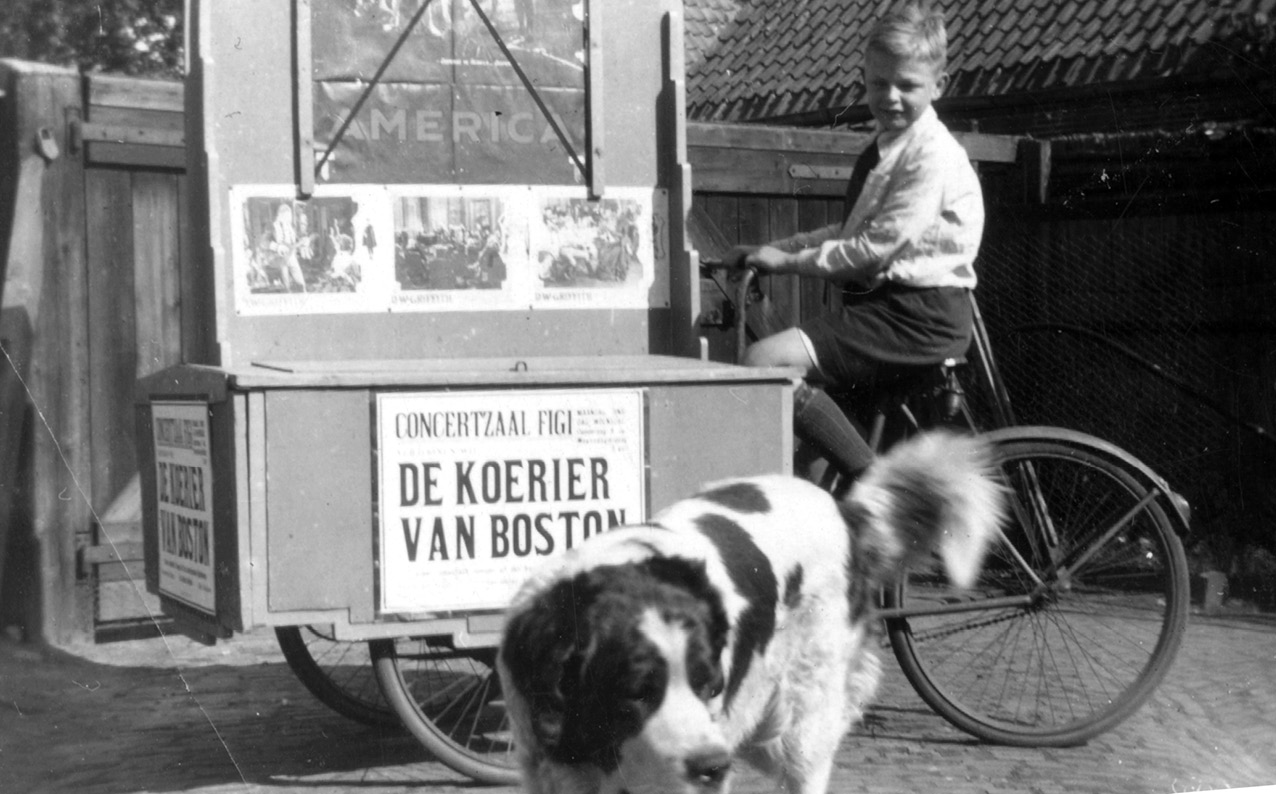
|
*** |
The main crossing of Zeist (with the large gas lantern in the centre), at the turn of the 20th century. The kiosk sold magazines and public transport tickets. It was also the waiting room for travellers using the horse tram to Utrecht. In the distance: Slot Zeist.
During the Roaring Twenties Figi’s bakery shop had rapidly expanded: it included a Lunchroom, a theatre, a restaurant and a hotel. Jan Ruijs, one of the Ruijs brothers, is standing in front of the hotel wearing a suit.
George Figi knew he chose the perfect spot to open a tea garden across from the newly build Town Hall of Zeist.
In May 1945 the Netherlands was liberated by the Canadian Forces. A long column of army vehicles, driving from Arnhem to the West, was welcomed by a jubilant crowd.
After the German occupation, the Figi Hotel was temporarily transformed into an Officers mess for Canadian Forces. They called it the ‘Palliser Hotel’, named after a luxury hotel in Calgary.

|
*** |
In 1925 the Ruijs Family built a theater and concert hall. Soon, it would also became a popular cinema, showing projecting the newest motion pictures alongside Tuschinski Theater in Amsterdam.
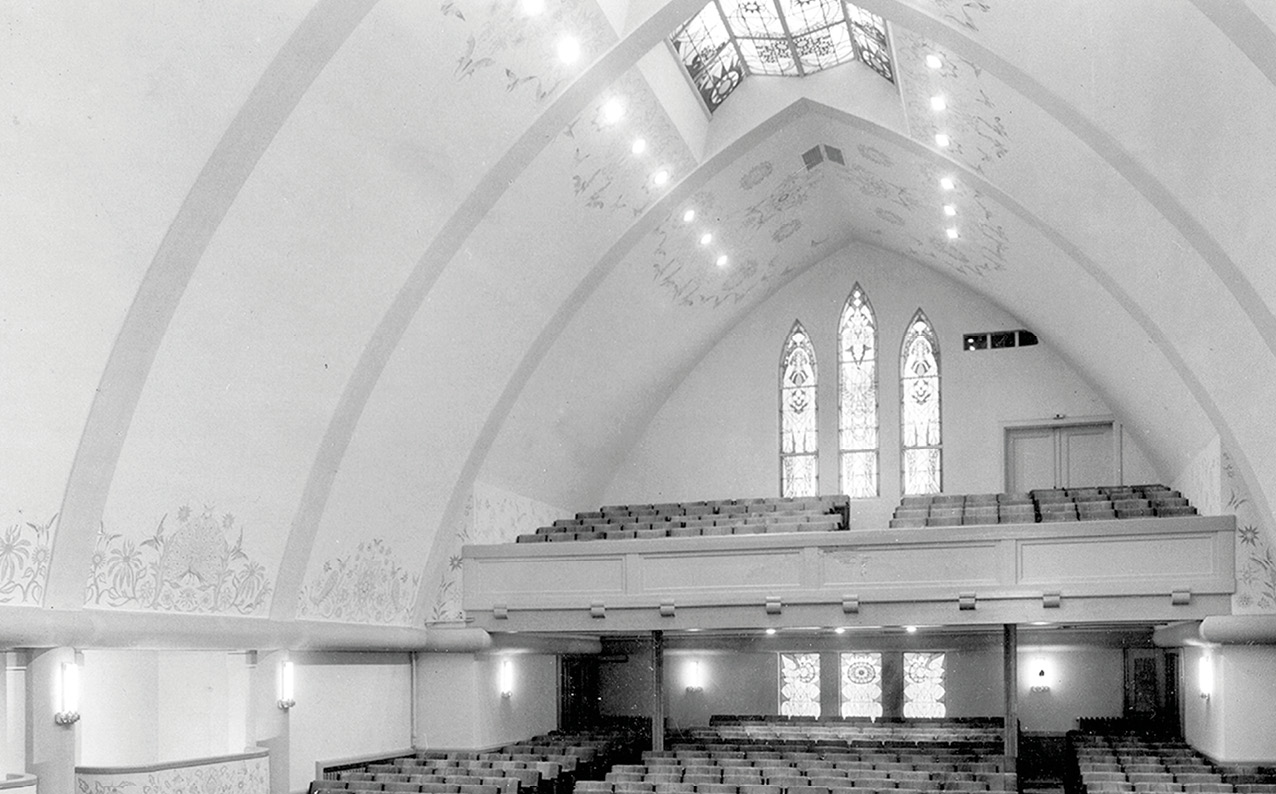
|
*** |
The flags of all NATO member countries, waving in front of the Figi Hotel. This was to welcome their supreme commander, Dwight D. Eisenhower who attended at a conference held featured in Figi in 1952.

|
*** |
Aerial imagery of Slot Zeist around the 1930’s. On top, at the intersection, Hotel Figi (right) and the Town Hall (left).

|
*** |
Artist impression of Lunchroom Figi at the beginning of the 20th Century during the directorship of the Ruijs brother Theo. George Figi moved his bakery to this spot, shortly after the announcement that a Town Hall was to be being built on at the opposite side.

|
*** |
An automobile parked in front of Hotel Figi, on the eve of the Second World War. In By 1925 the Ruijs family had also build a theater and concert hall for its guests and for the regional community.

|
*** |
During the Roaring Twenties, Figi’s bakery shop had rapidly expanded: it included a lunchroom, a restaurant and a hotel. It was a popular spot as Figi was on the intersection of the tramway lines to Utrecht, Arnhem and Amersfoort.

|
*** |
As the number of cars exponentially grew, the electric tramway, connecting Figi with Utrecht and Arnhem, became obsolete. Despite being the busiest long-distance tram line, the line was suspended in 1949. The beautiful cars of the guests of Figi were parked in front of the Town Hall of Zeist.

|
*** |
Kids Children posing at the main crossing of Zeist, in front of the large gas lantern around the turn of the 20th century. George Figi hadn’t relocated moved his bakery yet, as the numerous trees on the left reveal.

|
*** |
A worry-free scene, shortly before the Second World War. In the background the electric tram servicing Utrecht, Arnhem and Amersfoort. Despite being the busiest long-distance tram line, the line was suspended in 1949.

|
*** |
The huge gas lantern in the center of the main crossing of Zeist, at the turn of the 20th century. The kiosk, hidden between the trees, sold magazines and public transport tickets. It was also the waiting room for travellers using the horse tram to Utrecht.

|
*** |
Grand opening of the Figi Theater and Concert Hall in 1925. The theater featured companies such as the Wienerburg Theater and the Ballet Russe de Monte Carlo.
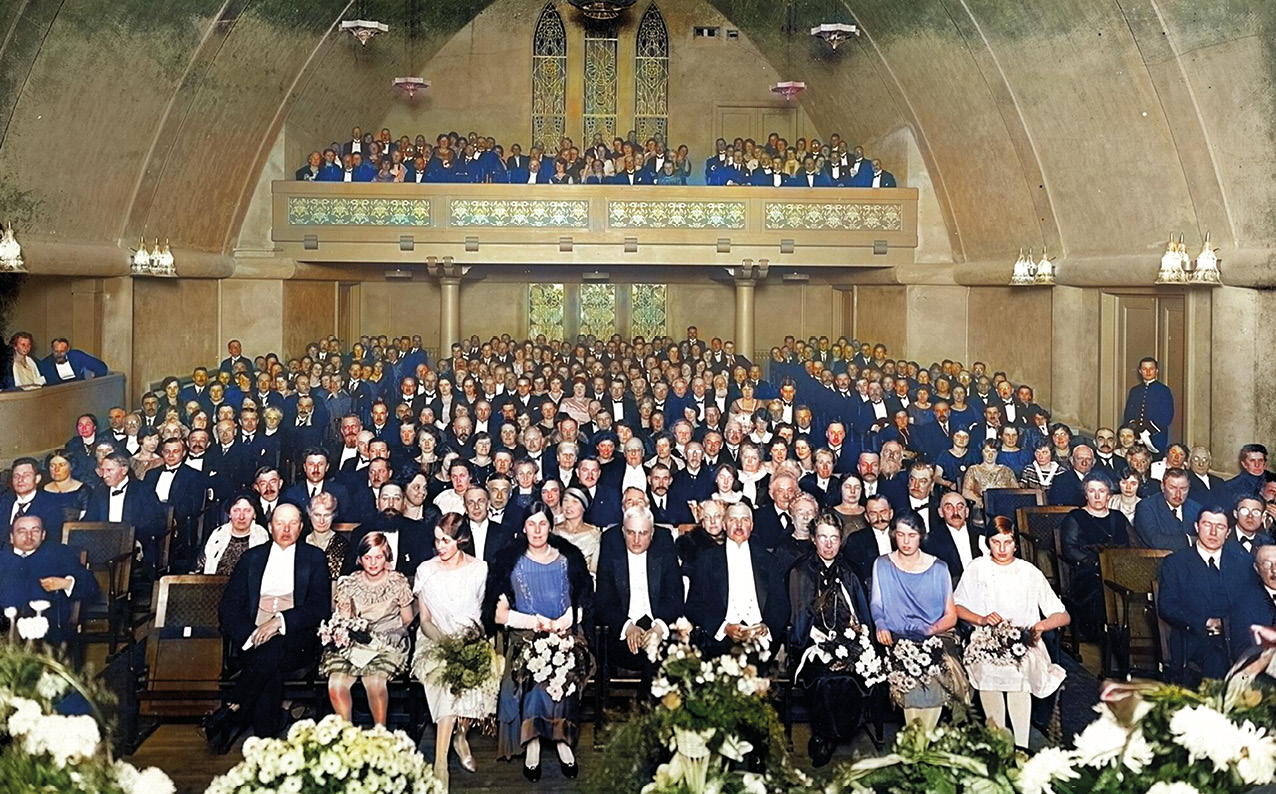
|
*** |
Horse trams brought travellers from Zeist to Utrecht and vice versa. In 1908, George Figi chose the exact location of the ‘Donkerelaan Kiosk’ to relocate his bakery.
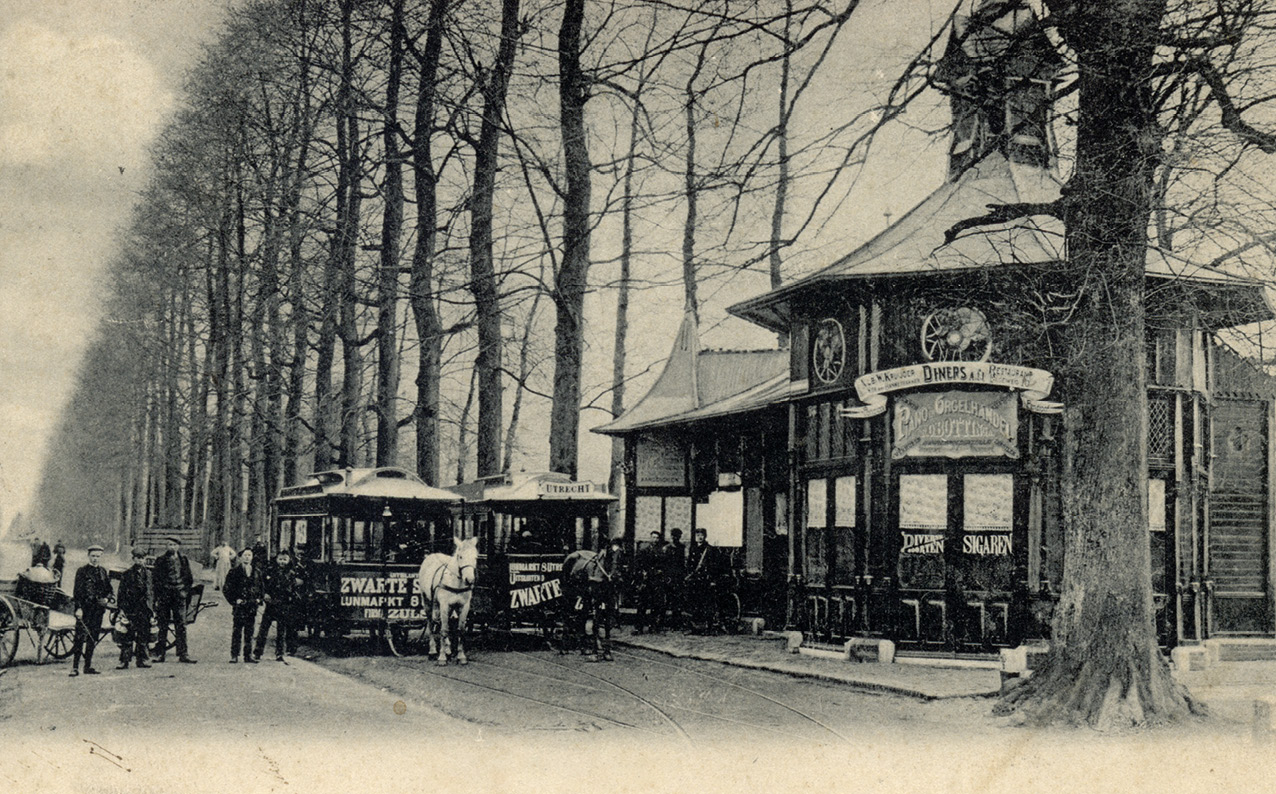
|
*** |
George Figi surrounded by his staff in front of his salon, before moving it to the current location of the Figi Hotel in 1908.
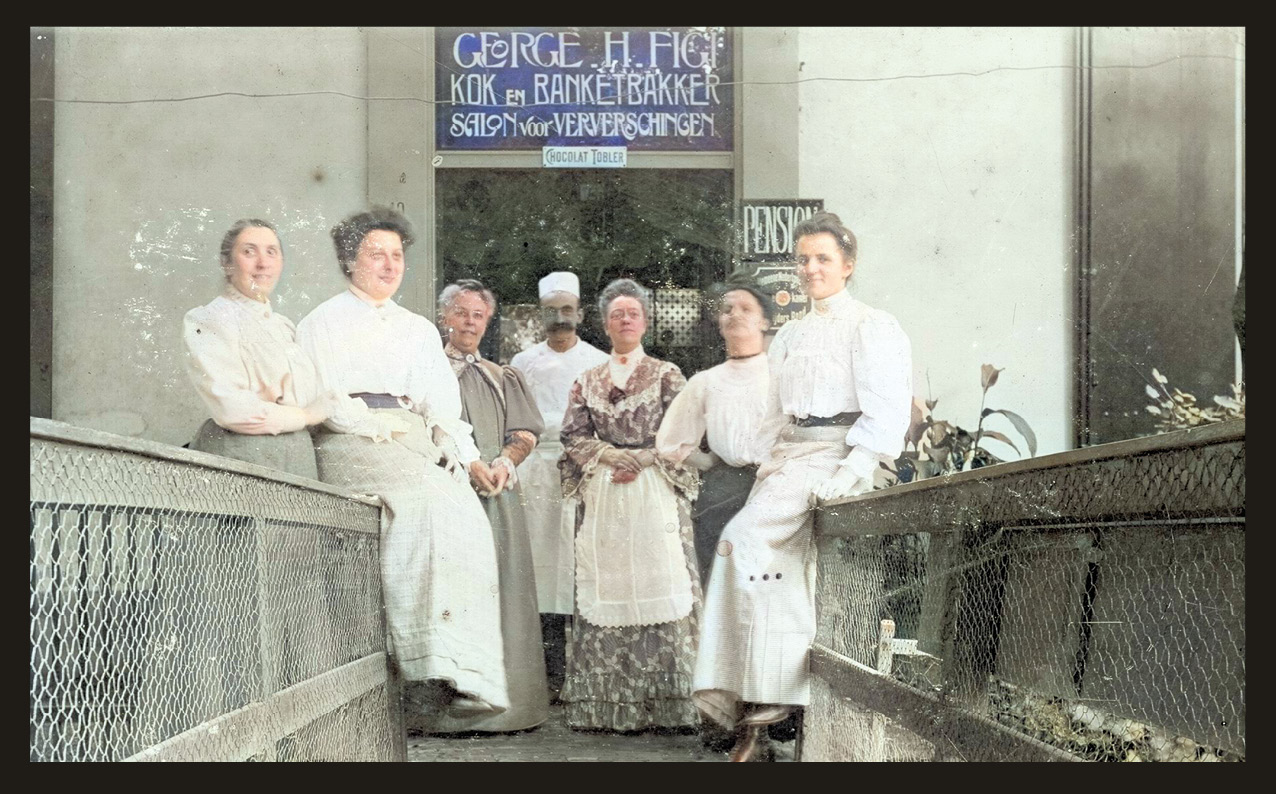
|
*** |
Her Majesty Queen Emma of the Netherlands visits a concert at the Figi Theater and Concert Hall on June 13, 1931.

|
*** |
One of the earliest aerial imagery of Zeist, taken around 1921. During the Roaring Twenties, Figi comprised of included a lunchroom, a theater, a restaurant and a hotel. Its location marked a popular spot as Figi was on the intersection of the tramway lines.

|
*** |
Engraving by Daniel Stoopendaal of Slot Zeist, around 1700: ‘Vue de la Maison de Zeyst avec ses jardins et plantages appartenans a monsieur le Comte de Nassau’.
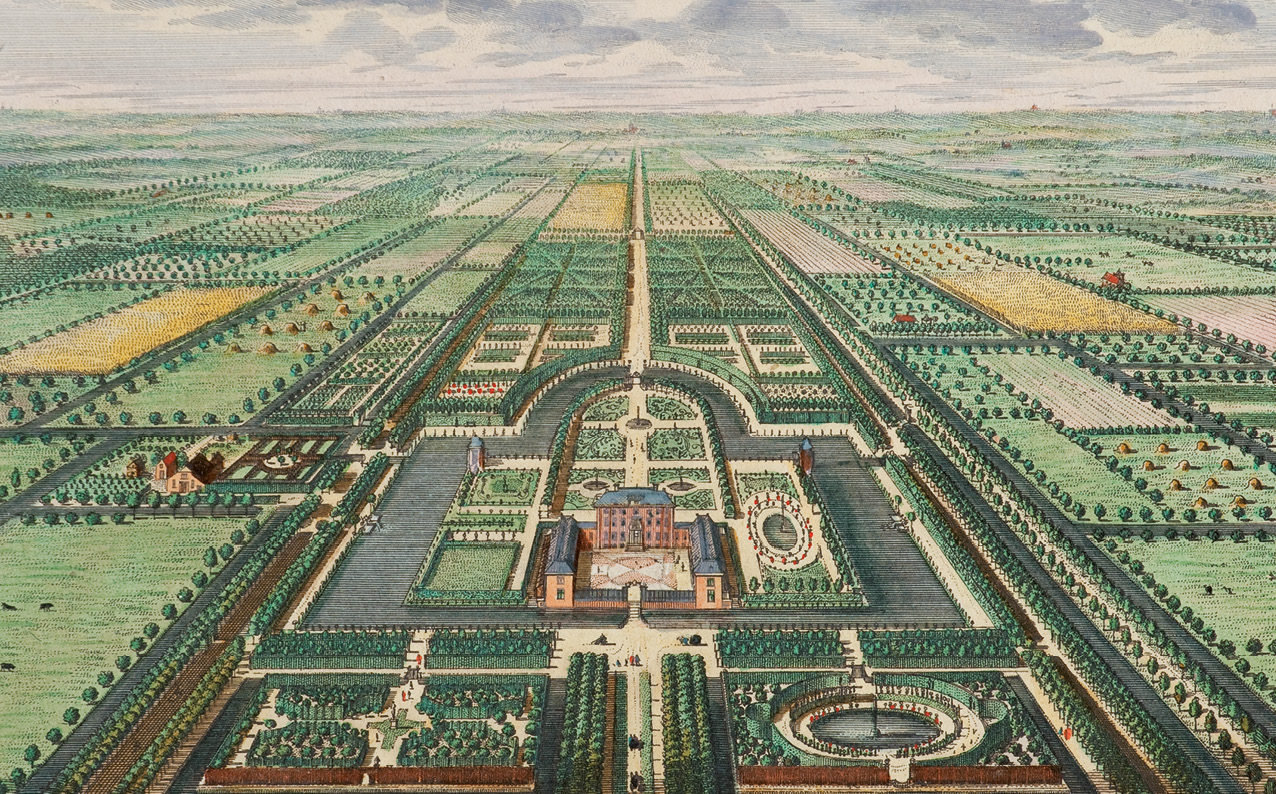
|
*** |
Related


